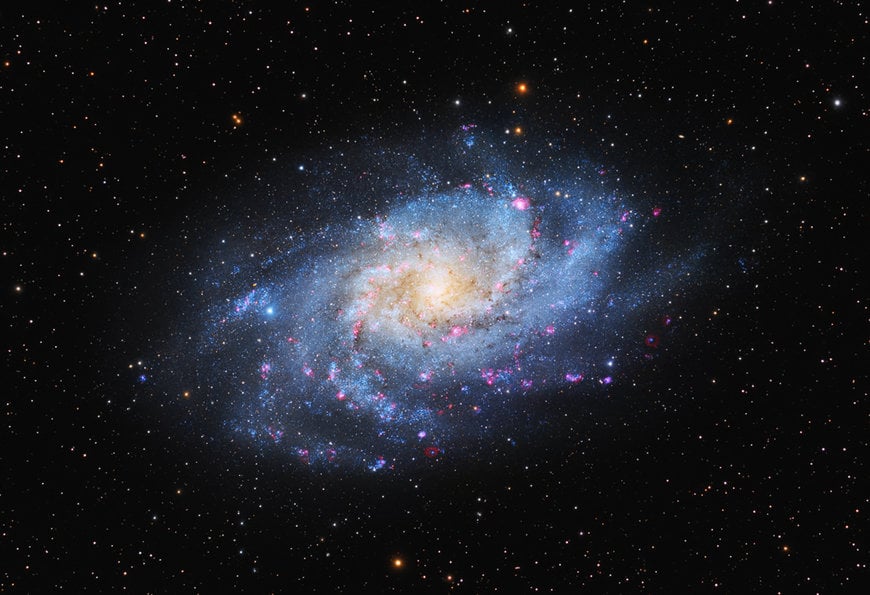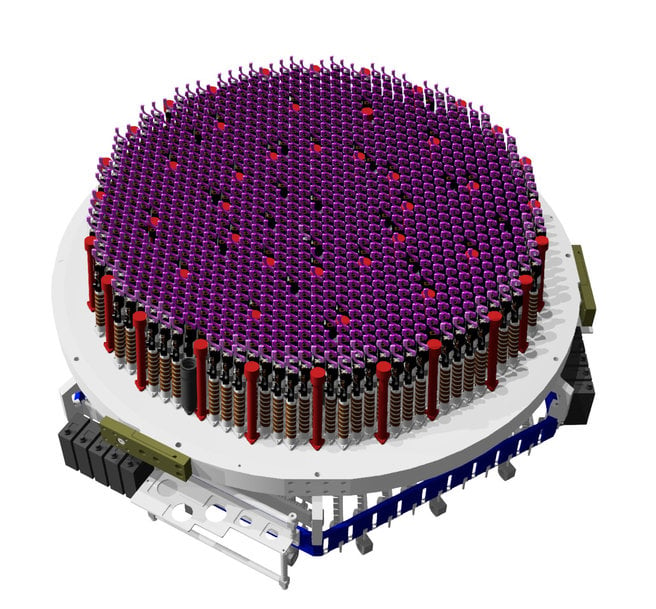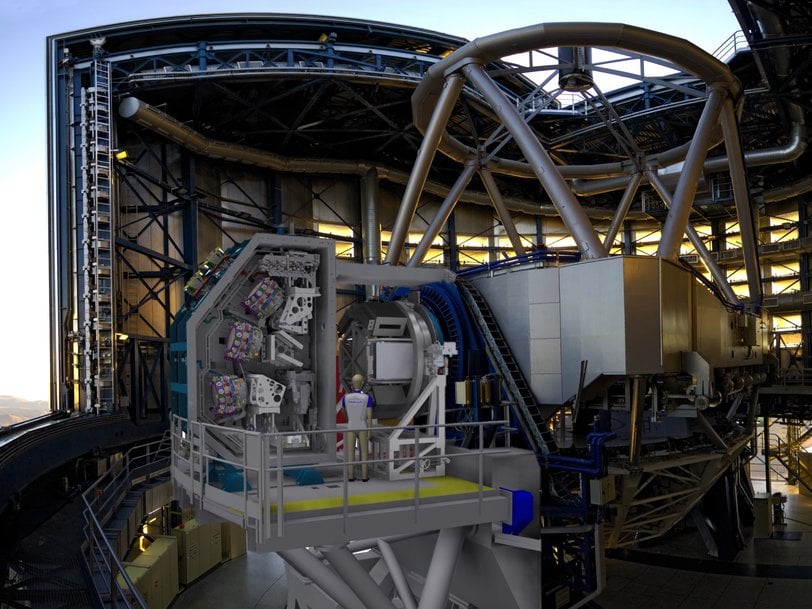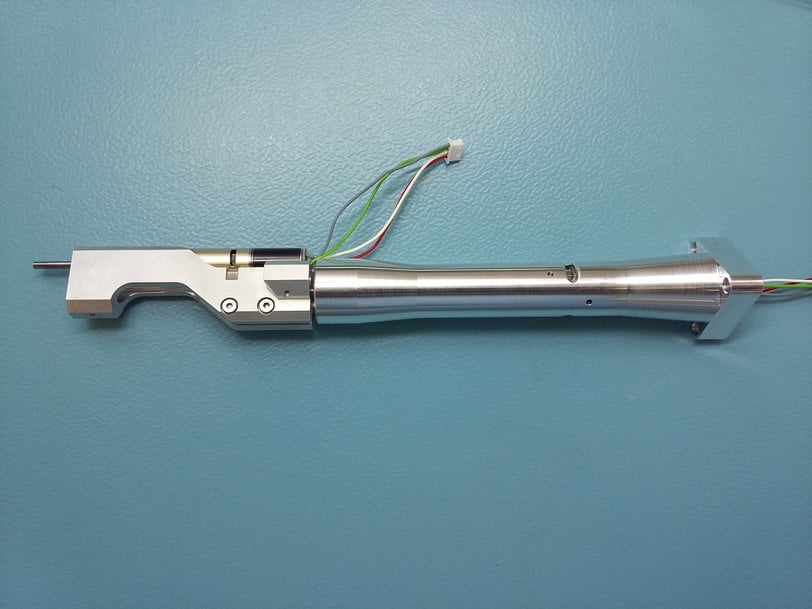www.industry-asia-pacific.com
11
'19
Written on Modified on
GPS for the milky way
What is going on in the neighbourhood? We all want to know, whether we admit it or not. Applied to the whole of humanity and Earth, the question is: What is going on in the Milky Way? We know surprisingly little about this, because we literally have a hard time seeing the wood for the trees. But the MOONS project initiated by British astronomers aims to change this. Technology from FAULHABER will play an important role.

Galactic lack of knowledge
When it comes to exploring our own disc-shaped spiral galaxy, astronomers have a fundamental problem: While Earth is not right in the midst of it, it is still located on the disc of the Milky Way. So if they want to look at the centre from this vantage point, or even beyond it to the other side, the view is obstructed by countless stars. And from our terrestrial perspective it is very difficult or even impossible to determine where on our mutual disc they are located. One of the regions we know very little about – of all things – is the dense part in the centre of the galaxy, where countless stars and gas clouds cluster around a presumed black hole.
But a major astronomy project is about to close many knowledge gaps. Eight institutes from several countries are involved in this undertaking. The project was commissioned by the European Southern Observatory (ESO). This scientific organization is operating some of the world's most powerful telescopes in the Chilean Atacama Desert. This includes the Very Large Telescope (VLT) at the Paranal Observatory with a mirror diameter of 8.2 metres.
The goal of the project is to equip the VLT with a new instrument to capture the optical signals from space. The instrument in question is a spectrograph, which is capable of simultaneously capturing a large number of cosmic objects in the visible and infrared part of the spectrum. Its abbreviated designation gives the project its name: Multi-Object Optical and Near-infrared Spectrograph, MOONS. It is coordinated by the United Kingdom Astronomy Technology Centre (UK ATC) in the Scottish capital of Edinburgh.

Spectrum instead of photo
"With a high-quality photo camera you can change the lens. But with an astronomy telescope it is the opposite – the VLT has an outstanding lens, and we will simply replace the currently connected 'camera' with our MOONS," explains Dr William Taylor, scientist at the UK ATC. With its new technology, MOONS opens up entirely new possibilities in observing space, even though it does not produce large-sized images in the traditional sense. Instead, it captures minute details.
This is how it works: The huge lens and mirror of the VLT are pointed at the part of space that is to be observed, similar to before. Now, the ends of exactly 1001 optical fibres in MOONS are aligned to individual objects within this cosmic region. Instead of capturing the entire selected area like a camera, the new instrument focuses the fibres on certain points in the Universe. And even these points are not just photographed, but instead their light is separated by prisms into the individual components, i.e. different wavelengths.
"Scientifically speaking, this method yields much more information than an image," explains Dr Taylor. "For example, we can learn about the chemical composition of the object. Furthermore, this allows us to calculate its dynamics, i.e. the velocity and direction of movement. Because MOONS captures the near-infrared spectrum, we can precisely analyse the redshift that the light from distant objects travelling to us is subjected to." When a star moves away from Earth, the wavelength of its light becomes longer. This is how part of the visible light shifts to the invisible infrared range, which is still close to the visible spectrum.

Thousands of objects in view
Prior technology allowed for a maximum of about one hundred objects to be observed individually, and only in the range of visible light. MOONS not only multiplies this number by ten, but the depth of information also increases manifold. Within the Milky Way, this will enable us to look much more precisely between the trees and get a much clearer picture of the entire proverbial forest.
"One of the objectives of the project is to create a 3D map of the Milky Way, which would allow some sort of GPS navigation throughout our galaxy. The MOONS technology with its unprecedented resolution also enables us to look very far, and thus also very far back in time. We will be able to approximate the Big Bang to within a few hundred million years." This will give scientists insights into the Universe's infancy. And while this is already possible today to some degree, MOONS will give us a much clearer and detailed picture, according to Dr Taylor. "We will be able to map the Universe to an unprecedented depth."
The astronomers aim to target several million objects over a period of about five years. To reach that aim, the 1001 optical fibres of the spectograph have to be pointed at the cosmic targets quickly and mostly automatically. This is achieved with an equal number of fibre positioning units (FPUs). Each FPU has two stepper motor drive units fitted to reducedbacklash spur gearheads. The one in the back moves the central axis (Alpha) of the FPU. Eccentrically mounted on this, the front motor-gearhead drive unit (Beta) simultaneously moves the fibre tip. The combination of the two axial movements allows each FPU to cover a circular area, within which the fibre can be randomly aligned. This area partially overlaps the areas of adjacent FPUs. That means that every point within the capture zone can be controlled. To meet the challenging requirements in terms of positional repeatability, which is a must to avoid collis between FPU end tips, the drive system solution has to be extremely precise. To ensure the required precision and to avoid collisions between the FPU tips, the systems must operate with high repeatability. The high-quality stepper motors come from FAULHABER PRECISTEP; the zero backlash gearheads from FAULHABER Minimotor contribute to the positioning accuracy. FAULHABER subsidiary mps handles the mechanical design of the modules.

Tailor-made aiming device
"We received very valuable input from all three participating companies of the FAULHABER Group," reports Dr Steve Watson, who is responsible for the FPU development at UK ATC. "Without their unique know-how, it would have been impossible for us to develop this core module in this form, and above all in the kind of numbers we needed. In addition to the alignment speed of the optical fibres, they must also be highly precise. We achieve an accuracy of 0.2 degrees and a reproducibility of the position down to 20 microns. Given the length of the FPU and the modular design, these are excellent numbers. And the units stay properly aligned to the focal plate on which the modules are arranged throughout all positions."
The high precision and extreme reliability of the components allows the control to be kept simple, which is another requirement to operate the spectograph flawlessly. Complex electronics and control logics would severely impede the quick and simultaneous control of 1001 units. Thanks to the high quality of the components, precise alignment is achieved by means of simple open loop control. The technology must also be very sturdy and virtually maintenancefree in order to perform its tasks without interruption over the planned ten-year service life of the system.
Project manager Dr Alasdair Fairley is already looking beyond such technical concerns: "We are making good progress with the MOONS. We expect to be able to install the spectrograph in summer 2021. Commissioning will take about half a year, so that we can probably start mapping at the beginning of 2022. We are confident that the FPU will remain fully operational for ten years without maintenance."

www.faulhaber.com/m/spectrograph/en

